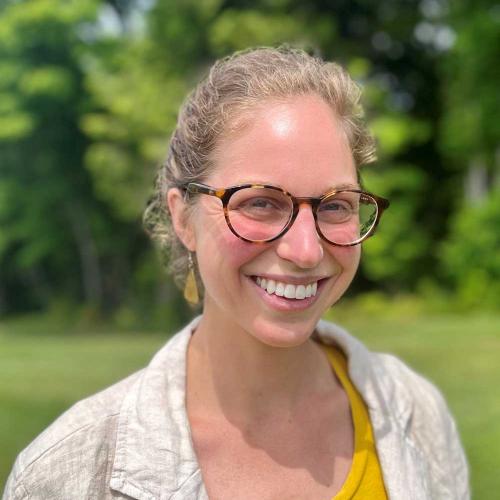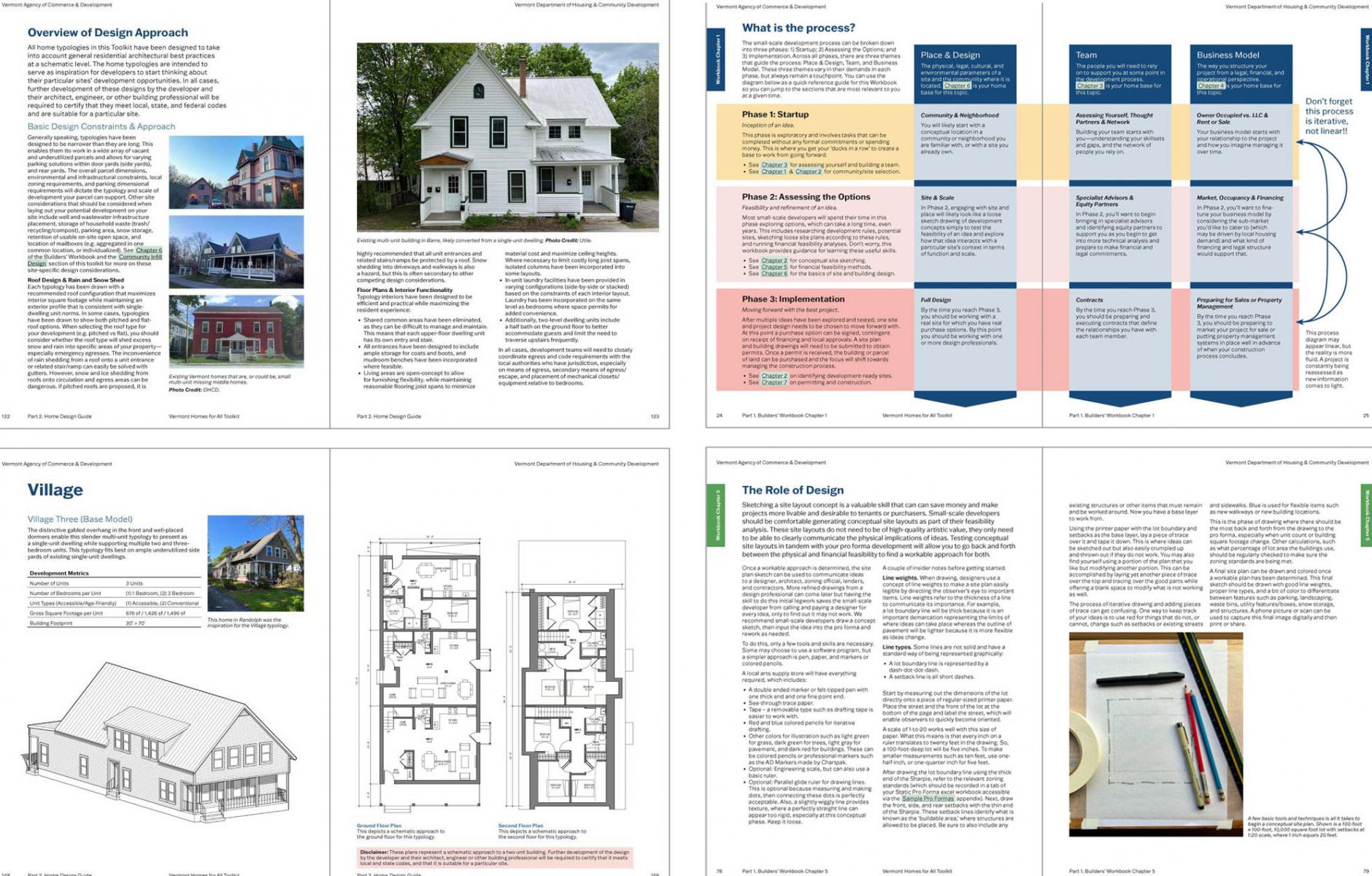
Vermont is bringing back missing middle housing
Public Square is highlighting top articles from 2024. Bringing back missing middle housing continues to be a high priority for both local and state governments. Here, we describe the groundbreaking efforts of Vermont to promote more diverse housing choices:
18 years ago, when Lilli West got into the real estate business, she saw a need. Back then, it was short sales and foreclosures—and she grew her business at an unlikely time when real estate agents were leaving the industry left and right. Today, as the owner of Maple Leaf Realty, the largest agency in Bennington, VT, West sees a different need: “We have run out of housing, and we desperately need new construction.”
To address this need, West thought Vermont would benefit from a checklist or roadmap for housing development, to streamline and clarify the complicated process. She was thrilled to learn that the Vermont Department of Housing and Community Development was creating this very tool to jumpstart and empower missing middle housing production.
The “Homes for All Toolkit,” launched in March 2024 and supported by AARP-VT funding, is a design-and-do guide for small-scale home builders, investors, and community leaders. It proposes missing middle homes, or MMH, as a way to deliver diverse and affordable housing choices in convenient, existing, walkable neighborhoods and places.

These home types, which include accessory dwelling units (ADUs), duplexes, small-scale multi-household buildings, and neighborhood-scale mixed-use/live-work buildings, are rooted in Vermont’s traditional development pattern and the New England vernacular style. However, over the 20th century, restrictive zoning and regulations made many of those options illegal or limited where they could be built.
The result for Vermont’s home production environment: large, expensive single-family homes, large and mid-size lots, and large-scale multi-family apartments. Vermonters looking for housing options in-between, like a duplex or four-plex, cooperative housing, senior housing units, age-friendly homes, or townhouse condominiums have very limited options.
The VT Homes for All Toolkit aims to change that.
This 220-page guide is full of tips, tools, and resources for would-be developers (and those who support their work) to build the well-located homes Vermonters need at different scales designed to cater to a range of income levels, family sizes, and lifestyles. It includes three components:
- Builders’ Workbook: A Missing Middle Home builders’ ‘how-to’ workbook that provides a comprehensive road map to real estate development for first-timers. This workbook provides guidance on a variety of considerations—including regulations and zoning, financing, infrastructure, and design, with advice on potential partners able to help beginner developers achieve success.
- Missing Middle Homes Design Guide: A design guide for Missing Middle Homes drawing from local architectural traditions that are familiar and loved by Vermonters—as well as suitable for New England’s variable weather.
- Vermont Neighborhood Infill Design Case Studies: A series of five case studies developed in cities and towns throughout Vermont (Bellows Falls, Arlington, Rutland, Vergennes and Middlesex) showing how MMH building designs can be integrated into existing neighborhoods and communities using illustrated visualizations.

But the Toolkit is much more than its component parts. It is the start of a movement to bring missing middle housing back to Vermont communities, an opportunity to grow a new generation of developers who value “return on community” as much as return on investment. It is a statewide clarion call to support these developers and their work through common-sense regulatory and financial solutions.
This was evident on March 14, when the VT Homes for All Toolkit launched to a maximum capacity crowd at the Toolkit Trainer Summit in Barre City.
The half-day event was an energizing occasion to connect, network, and learn for novice and emerging small-scale home builders, community development professionals, and local leaders interested in innovative home-building and home-renovation solutions. The Summit included a Vermont small-scale developers’ panel featuring stories and advice from four current developers, and an interactive activity where attendees were encouraged to “think like a developer” and design a missing middle housing site plan. Using a base map, resource packet, and a kit of parts—including three of the new VT missing middle home typologies—participants worked through a set of common development constraints such as environmental, regulatory, and infrastructure. They then identified developable area and configured the site plan, being mindful of parking requirements, driveway access, outdoor gathering space, and considerations like snow melt that are familiar to Vermonters.
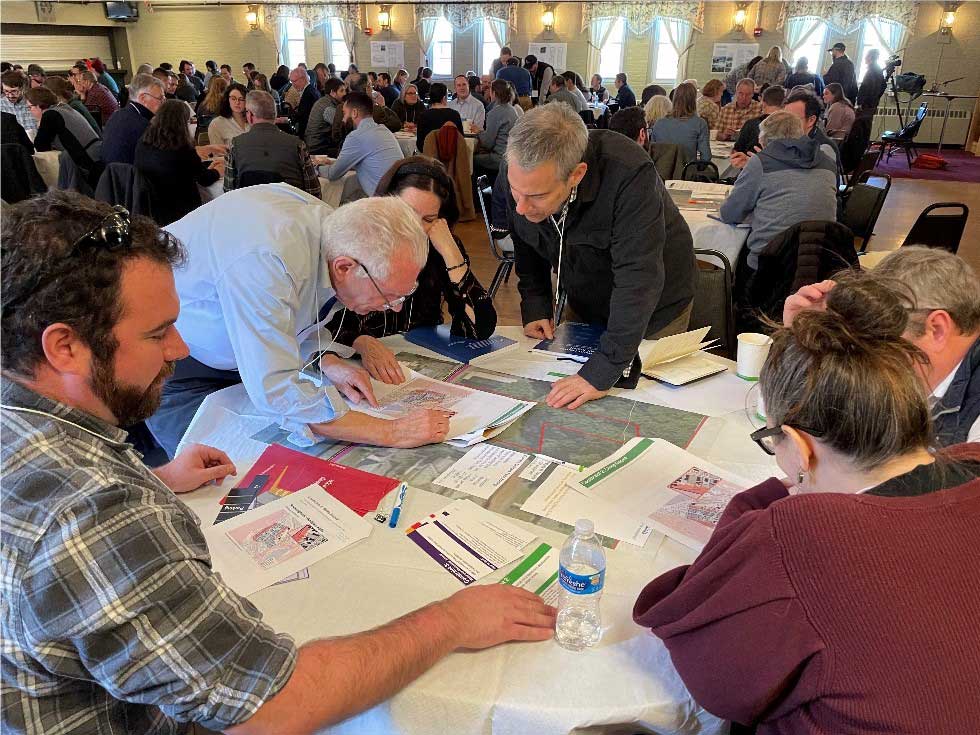
Summit attendee Ravi Venkataraman—who is a planner with the City of Burlington, lecturer at the University of Vermont, and PhD candidate in Planning at Virginia Tech—says the activity animated the Toolkit in a practical way. “The ‘think like a developer’ activity brought together the dimensional requirements concepts with the places we walk by every day,” said Venkataraman. “Having developers in the room too clarified not only the impacts of small changes to, say, setbacks and lot coverage on the built environment, but also how such small changes affects small developers, renters and homebuyers alike.”
The story of Homes for All
The Homes for All Toolkit was years in the making, and it was not born in a vacuum.
“The Vermont Department of Housing & Community Development (DHCD) strives to keep tabs on innovations around the Country,” explains Planning & Policy Manager Jacob Hemmerick—especially when it comes to untying the Gordian knot that is the housing crisis. He points to development-ready community checklists popping up in places like Maine and Michigan, pre-approved house plan sets such as “Build South Bend” in Indiana, and emerging non-profits like the Incremental Development Alliance’s small-scale developer training.
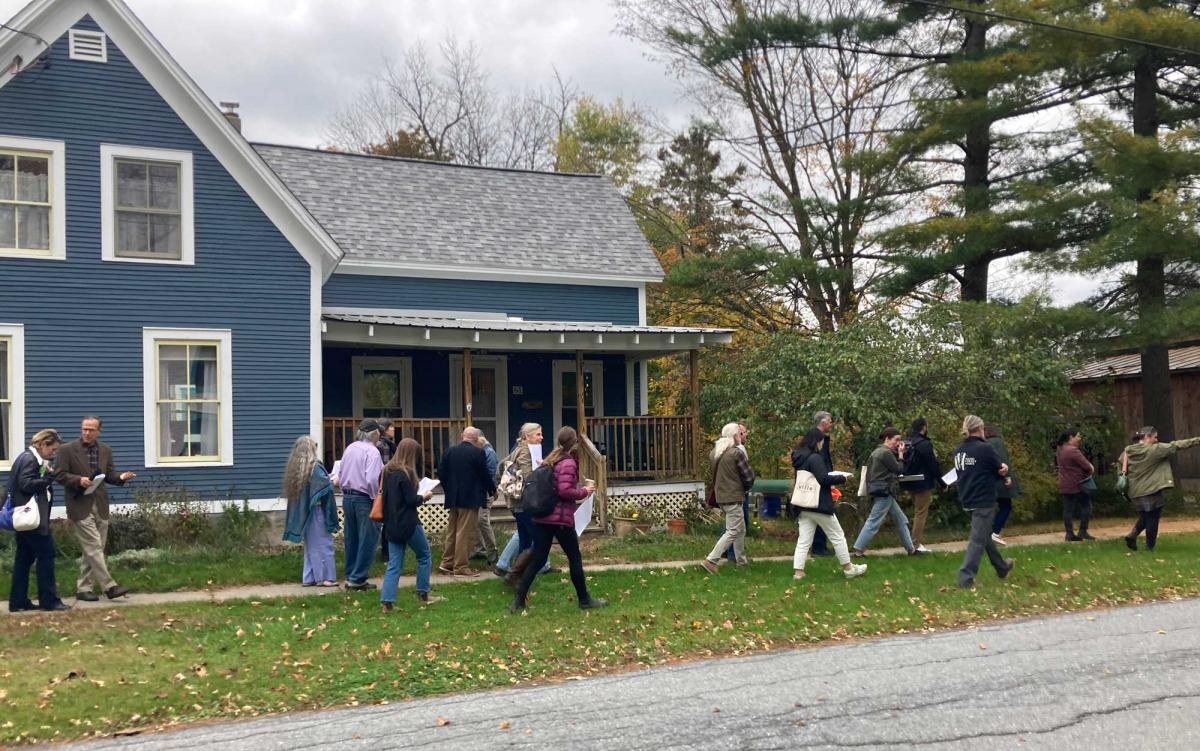
DHCD saw an opportunity to offer a step up for small-scale developers in Vermont's unique market. It was an idea to challenge market forces suppressing missing middle homes and builders, and it spoke to the indomitable spirit of Vermonters and their passion for local solutions scaled for our rural economy. The Governor’s team and Senator Michael Sirotkin, former Chair of the Senate Committee on Economic Development, Housing and General Affairs, saw the potential and supported funding for this project in the Omnibus Housing Bill in 2022. The Department then framed up the project, attracted strong interest in the consulting contract, and hired Utile Planning & Design, a firm with extensive experience in both affordable housing and the New England context.
Over the past year, the Homes for All team engaged dozens of folks across the state, from experts across the building professions to bankers and real estate agents. The team also led neighborhood infill studies with local advocates in five communities and conducted precedent research in many more. One of those communities was Bellows Falls, which applied to participate in the project as a pilot infill site.
“This toolkit is imperative for small downtowns like Bellows Falls, where there is so much passion for the community and housing, but a gap in development skills. The toolkit helps to fill that gap by providing step by step guidance to developing new housing for new or emerging housing providers,” says Sarah Lang, Administrator of the Rockingham/Bellows Falls Incremental Development Working Group, or RIDWG. She added that the Toolkit was one step in “a long list” that RIDWG has taken to advance incremental development in the community.
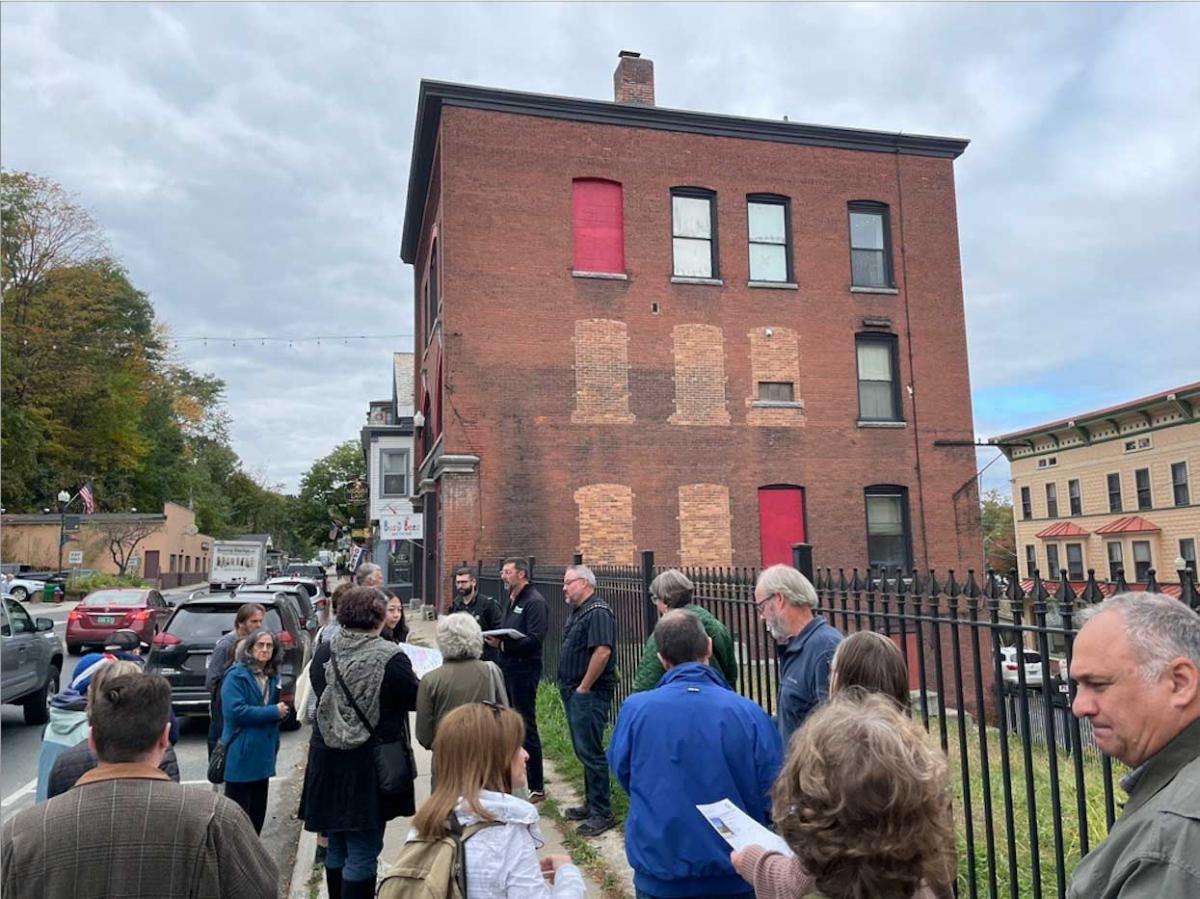
Homes for All was supported by a Steering Committee and design subgroup representing industry leaders and allied professions throughout Vermont. Lessons learned transcended the Toolkit itself, and include additional needs for hands-on training, modular construction options, and continued land development regulation reform by locals.
Importantly, infill housing is facilitated by, and reinforces, recent advances and innovations in Vermont’s regulatory landscape, including code reform, historic statewide housing legislation, incentive programs to locate housing in compact, walkable communities, and new funding streams to support Accessory Dwellings Units and middle-income housing renovation and production.
And the work continues. “We are working hard in the legislature this session to ensure that land use, permitting, and density are all addressed in ways that promote housing development, not limit it,” says Alex Farrell, Commissioner of the Department of Housing and Community Development. “Infill and missing middle housing represent practical solutions to growing our housing stock that can serve as the building blocks for vibrant, equitable, and adaptable neighborhoods.”
What’s next for Homes for All
Vermont has a plan to keep bringing missing middle housing back online and keep the momentum generated by the Toolkit’s launch going.
The Toolkit’s four missing middle housing typologies proposed in the toolkit will be starting points for a pre-approved plan set of context-sensitive designs ready for use around the state, along with regulatory efficiencies, to make housing development more predictable and affordable—as time is money in real estate. Vermont would become one of the first states to produce such a pre-approved plan set.
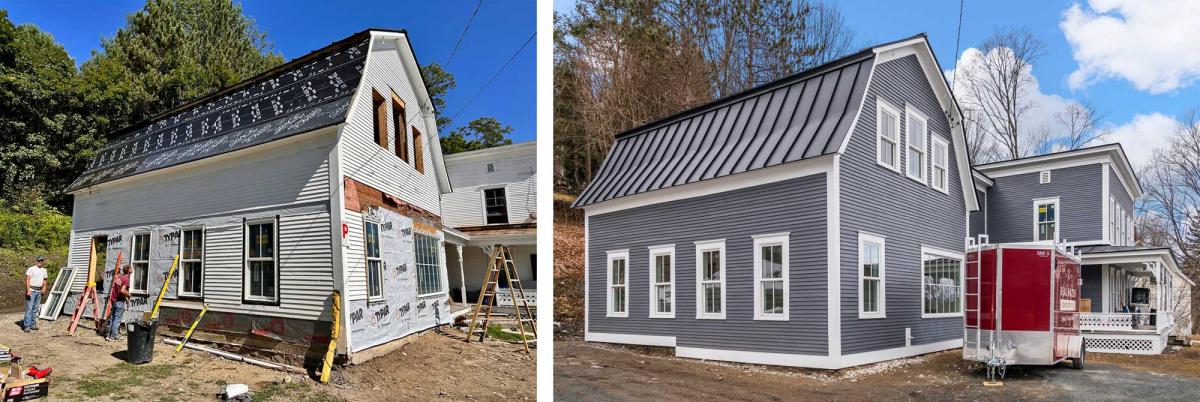
Later this year, the Department will also launch the first round of a live training cohort to coach a group of aspiring developers through the Builders’ Workbook with hands-on project support, technical assistance, and networking opportunities.
“This is representative of a sea change,” said Seth Leonard, Managing Director of Community Development at the Vermont Housing Finance Agency, at the Homes for All Summit on March 14. “Housing is the backbone of our economic vibrancy, of our diversity, of our shifting demographic realities for the future. We have to focus on who’s building and developing in Vermont in a new way.”
The Homes for All project is on track to attract and support and new generation of grassroots investors, local champions, and developers—especially first-time, women and BIPOC builders committed to their communities and ready to build walkable neighborhoods.
One such aspiring developer is Lilli West, the Bennington-based broker whose other hats include investor, renovator, and landlord. Now, West is making the transition to small-scale developer with her new company, Solutions Development. It’s an apt name because West, like many Vermonters, knows this moment of housing shortage calls for innovative solutions, and leaders to pilot them, on the path to providing homes for all Vermonters.

The Homes for All Toolkit and materials—including dynamic pro formas—are available to view and download for free at: https://accd.vermont.gov/homesforall.




